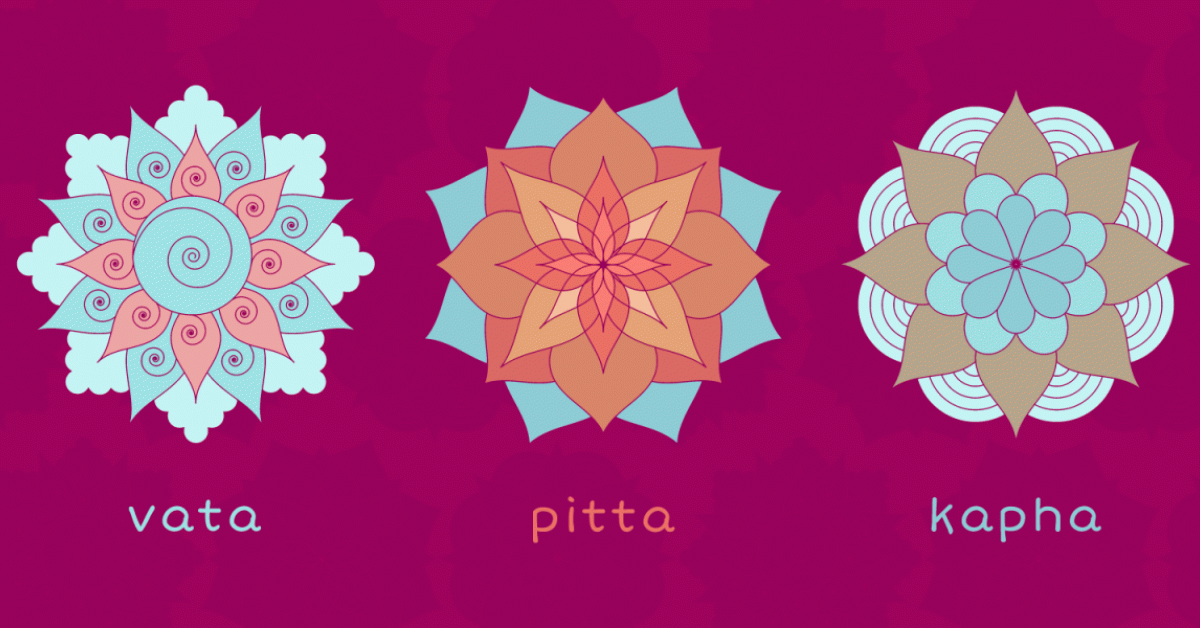Skincare
What Ayurvedic Dosha are you?
All about Ayurvedic Doshas and the right way to eat accordingly!
Before getting started with this blog, have a look around you. Think about all the people you know and their reactions to different situations. You’ll notice that no two people react the same way. The way people think, behave and react towards a particular situation differs from one another. But, what causes these differences in personality?
No, we are not going to bring in a psychologist to provide you with all the answers! Rather, we’ve got Ayurveda to support these statements with a detailed explanation.

Ayurveda, also known as the science of life, proposes that all living and non-living beings are composed of five elements of life, known as Mahabhutas. These are Prithvi (Earth), Vayu (Air), Jala (Water), Aakash (Space), and Teja (Fire). These elements vary from every species and are present in a predetermined ratio which can’t be changed. The permutations and combinations of these elements form the three doshas– Vata, Pitta, and Kapha (known as tridoshas), which form the fundamentals of Ayurvedic philosophy. These doshas are responsible for a person’s emotional, mental, and psychological well being.
Depending on your environment, climate, health, lifestyle, season, diet, relationships, and age, the ratio of these doshas changes. This constant fluctuation can affect your overall mood and health. A proper balance between these three doshas is important for complete well being.
What are Vata, Pitta, and Kapha?
Vata: Air and Space

Vata is called the “King of Doshas”, and translates to “vayu” which is associated with the movement and flow in the body.
Physical and Emotional Characteristics of Vata dominant people: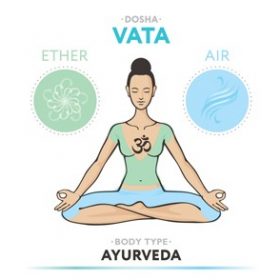
- They are lightweight and thin.
- Vatas are energetic but sometimes feel tired unexpectedly.
- They are known for having cold feet and hands and have dry, flaky skin.
- When their dosha is in imbalance, their skin type shows early signs of aging.
- They also experience anxiety, weight loss, frustration, aches, and pains.
- Vatas get angry easily but are also quick to forgive.
- They are also really creative and love to thrive on new experiences and adventures.
Best time of the day: 2 am to 6 am, 2 pm to 6 pm
Governing season: Mid September to Mid February
Favorable food items: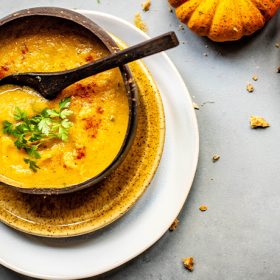
- Vata is a cold dosha that can be balanced by having warm and nourishing foods. Adding butter and fats to food items helps in stabilizing Vata.
- Foods having sweet, salty, and sour flavors are relaxing and gratifying.
- Vatas respond well to warm soups, foods, and beverages.
- Cinnamon, cardamom, ginger, cloves, and cumin are some of the best spices.
Foods to avoid: Cold foods like raw vegetables, greens, iced beverages, too much caffeine, and unripe fruits should be avoided.
How to stay balanced:
- Maintain a proper diet
- Exercise daily and regularly
- Avoid cold and windy weather
- Get regular Ayurvedic massages
- Avoid crowded and loud places
- Get enough sleep
Pitta: A Bit of Water and Fire

Pitta is a transformative force that is dominated by the fire element. It regulates all the metabolic processes of the body and regulates body temperature and hormonal balance.
Pitta is what allows you to perceive what is happening around you. They are distinguished by their quick thinking, as well as their powerful intellect and ambition.
Physical and Emotional Characteristics of Pitta dominant people: 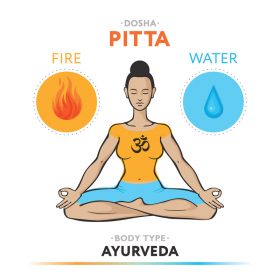
- Pittas have a warm body temperature and an excellent digestive system.
- They are medium built and have a muscular structure.
- They have oily reddish skin with light-sensitive intense eyes. It is easier for them to gain and lose weight.
- They also have a good complexion with strong eyesight.
- Pittas are good decision-makers and have high concentrating and learning ability.
- They are goal-oriented, passionate, and competitive.
- Pittas are often outspoken, direct, and quick-witted.
- They love adventure and obstacles. When they are out of balance, there can be sudden emotional outbursts, anger, and arguments.
Best time of the day: 10 am to 2 pm, 10 pm to 2 am
Governing season: Mid June to Mid September
Favorable food items: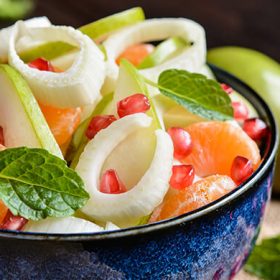
- Cold and warm foods are better for Pittas.
- Food items that taste astringent, bitter, and sweet are ideal.
- Cold food like ice cream, milk, and salads are refreshing while soothing herbal tea is favorable.
- Pittas should opt for vegetarian meals as red meats tend to increase body heat due to high-fat content.
- Vegetables, food grains, and milk should be consumed in large quantities.
Foods to avoid: Sour food items like pickles, cheese, and sour cream aren’t ideal for Pittas. Butter and fats should be added to food items. Foods that are alcoholic or fermented should also be avoided. Nuts, egg yolks, spices, fried food, and beverages should also be consumed in less to no quantities.
How to stay balanced:
- Maintain a proper diet
- Exercise when the weather is cool
- Avoid excessive dry and humid weather
- Stay hydrated
- Be patient and considerate
- Avoid conflicts
- Maintain moderation in every aspect
Kapha: Earth and Water

Kapha consists of water and earth elements, and translates to “the one that binds things”. It is responsible for the body’s stability, support, and lubrication.
It promotes emotional stability, physical, and mental endurance, and allows one to feel deeply. Its dense and stable quality protects our organs and maintains body heat.
Physical and Emotional Characteristics of Kapha dominant people:
- Kaphas have a broad and curvy frame with strong bones and muscles.
- They have cool and smooth skin with thick and wavy hair.
- Their prominent feature is large and bright eyes with fuller lips.
- They gain weight easily but find it difficult to lose weight.
- Kaphas are fine with having a couple of meals a day as they sometimes have slow digestion.
- They have a loving and calm nature.
- They appreciate life and prefer a regular routine in their personal and professional lives, and want to do things in a meticulous, step-by-step manner.
- Kaphas are powerful, patient, helpful, and show an excessive amount of attachment.
- During an imbalance, they become stubborn, complacent, and unmotivated.
Best time of the day: 6 am to 10 am, 6 pm to 10 pm
Governing season: Mid February to Mid June
Favorable food items: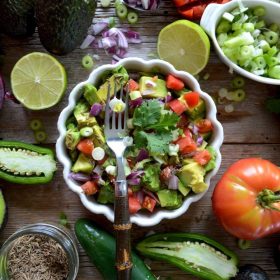
- Warm lightly cooked or raw food items are the best for Kaphas.
- They prefer dry cooking methods like boiling or grilling to moist cooking methods like steaming or poaching.
- Consuming spices like sesame seed, turmeric, cumin, and fenugreek seeds are helpful for increasing the appetite.
Food to avoid: Kaphas should avoid overindulging in sweet and fatty foods, as well as excessive salt consumption, which can lead to fluid retention. As Kaphas tend to overeat, they should have their main meal (dry and light) in the middle of the day. Sugar, fats, dairy products, and chilled products should be avoided. Ghee and oils should be used in moderation.
How to stay balanced:
- Maintain a proper diet
- Wake before dawn, and avoid sleeping during the day
- Exercise regularly
- Always keep dry and warm
- Engage in activities that excite and stimulate the mind and body
- Allow for a sense of adventure, excitement, challenge, and variety in your life
Can someone be bi-doshic or tri-doshic?
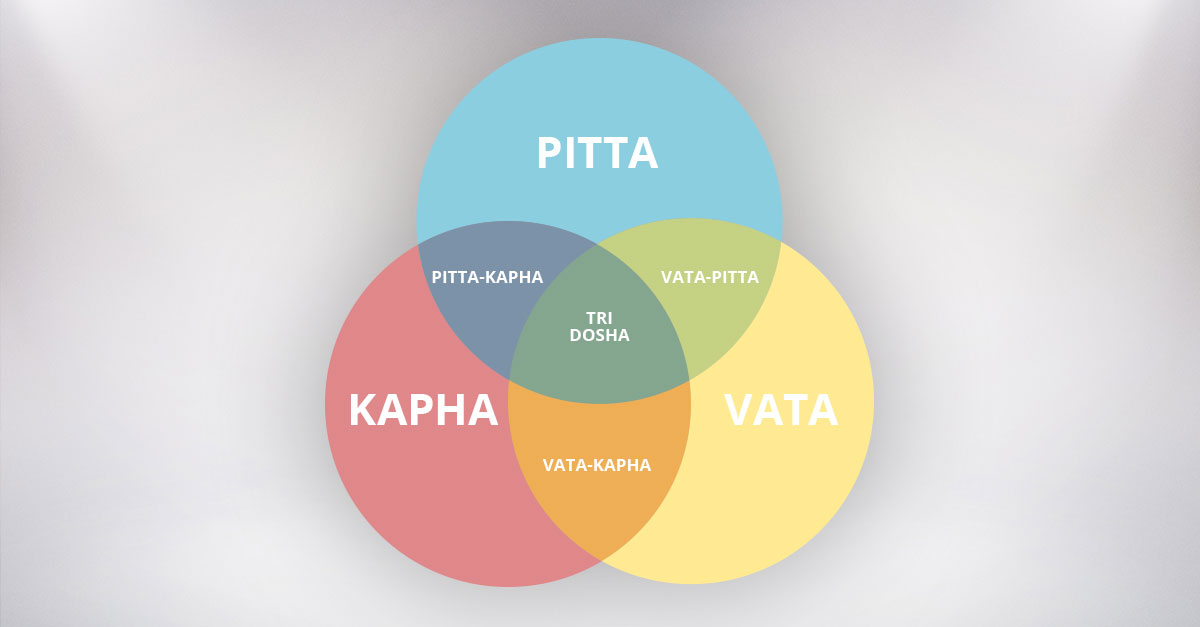
Bi-doshic means you have strong qualities in common with two doshic types. People having qualities of two doshas ( vata-kapha, pitta-kapha, and vatta-pita) are “split” in some ways. In certain conditions, one dosha will dominate the other one, and vice versa for other conditions.
Tri-doshic means having an influence of all three types of doshas in equal amounts. When the doshas are in balance, the person can be very strong but in case of an imbalance, he/she can suffer from poor health. The key to having a balance at all times is to follow practices that will counterbalance all the doshas.
The season is the best way to manage a bidoshic and tri-doshic prakriti. For example, as Autumn is a Vata season, it is better to follow a “Vata” balancing regime. During the summer season, you would follow a “pitta” balancing regime, and during the winter season, it is better to follow a “Kapha” balancing regime.
So, what’s your Dosha?


